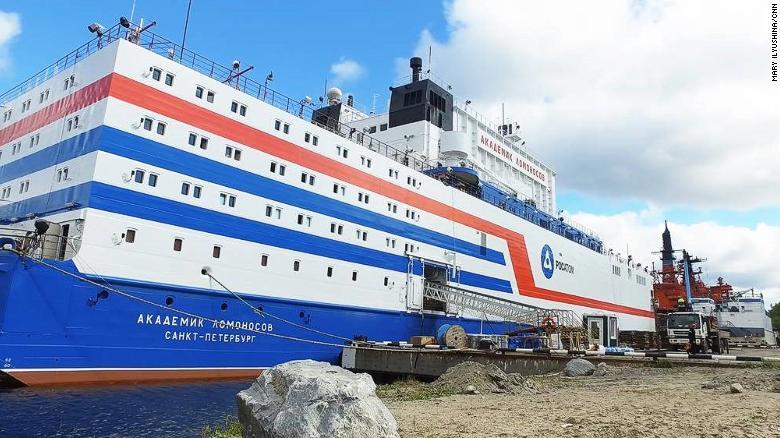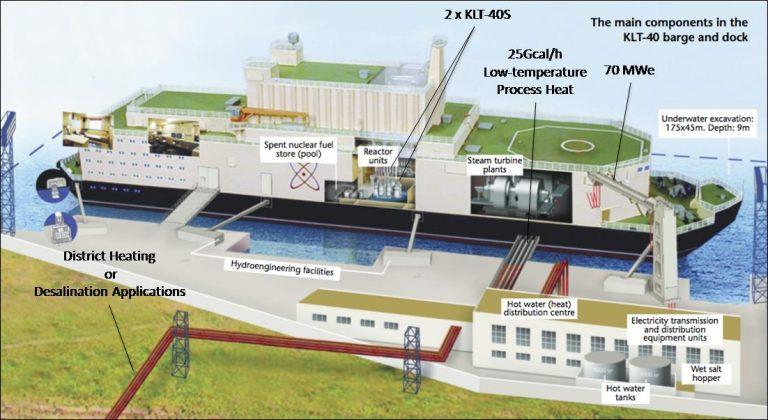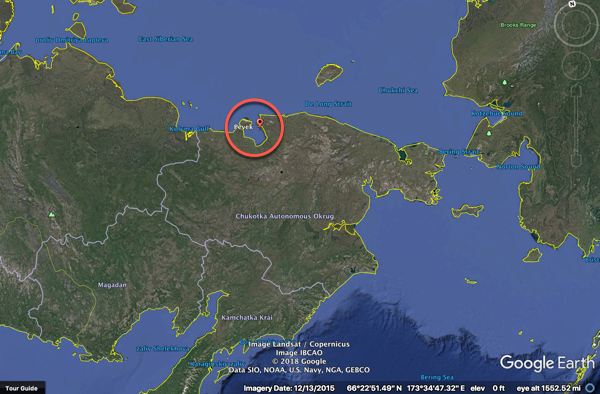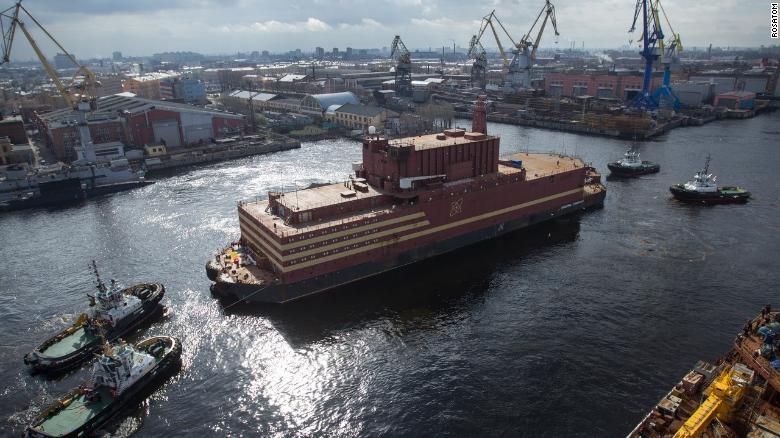Next month, the world’s first floating nuclear power unit (FPU) dubbed ‘Academik Lomonosov’ will be towed via the Northern Sea Route to its final destination in the Far East, after almost two decades in construction.
Russia’s first floating nuclear power plant has two KLT-40S reactor units that collectively generate 70 MW of energy.
A year ago we noted video of the beginning of the ships’ voyage (from St.Petersburg to Murmansk)
A floating nuclear power plant made by Russia headed out for its first sea voyage on Saturday. The floating plant, the academic lomonosov will provide power for a port town and for oil rigs. pic.twitter.com/Eo0uBjVfht
— ANews (@anewscomtr) April 28, 2018
The vessel is now expected to be towed “along the Northern Sea Route to the work site, unloaded at the mooring berth, and connected to the coastal infrastructure in Pevek,” added the press release.
Pevek is a small Arctic port town and the governmental center of Chaunsky District in Chukotka Autonomous Okrug, Russia, located on Chaunskaya Bay.
Once the floating nuclear power plant is moored and connected to the coastal infrastructure in Pevek, the nuclear reactors aboard will be used to power 100,000 homes in the region, a desalination plant, and critical energy infrastructure assets. Rosatom said the floating power plant “will replace the Bilibino nuclear power plant and Chaunskaya TPP that are technologically outdated,” and become the most northerly nuclear facility in the world.
However, the floating nuclear power plant has been extensively criticized by antipollutionist — Greenpeace has called it a “floating Chernobyl.”
“Nuclear reactors bobbing around the Arctic Ocean will pose a shockingly obvious threat to a fragile environment, which is already under enormous pressure from climate change,” Greenpeace nuclear expert Jan Haverkamp said in a statement.
“The floating nuclear power plants will typically be put to use near coastlines and shallow water … contrary to claims regarding safety, the flat-bottomed hull and the floating nuclear power plant’s lack of self-propulsion makes it particularly vulnerable to tsunamis and cyclones.”
Meanwhile, Rosatom states the vessel meets all requirements from the International Atomic Energy Agency (IAEA) and “does not pose any threat to the environment.”
“The FNPP is designed with the great margin of safety that exceeds all possible threats and makes nuclear reactors invincible for tsunamis and other natural disasters. In addition, the nuclear processes at the floating power unit meet all requirements of the International Atomic Energy Agency (IAEA) and do not pose any threat to the environment.”
Why would Russia want a floating power plant in the Arctic?
Speaking to reporters in 2017 after a conference with Russian counterpart Sergei Lavrov, Chinese Foreign Minister Wang Yi said that Russia’s proposal to jointly explore the Northern Sea Route was “a great idea,” and that “China welcomes this idea and supports efforts with partners in the region to develop a ‘Silk Road on ice’.”
The Answer: To provide the needed energy to build infrastructure for the ‘Ice Silk Road.’
As CNN concludes, the last Russian nuclear project of a comparable scale was completed in 2007, when the “50 Years of Victory” nuclear-powered icebreaker finally sailed after sitting in the docks since 1989. Now, after more than 20 years of arguments, changes of contractors and economic crises, Russian engineers can finally take pride in launching the world’s only nuclear floating rig.
via ZeroHedge News https://ift.tt/2FGEVqc Tyler Durden





